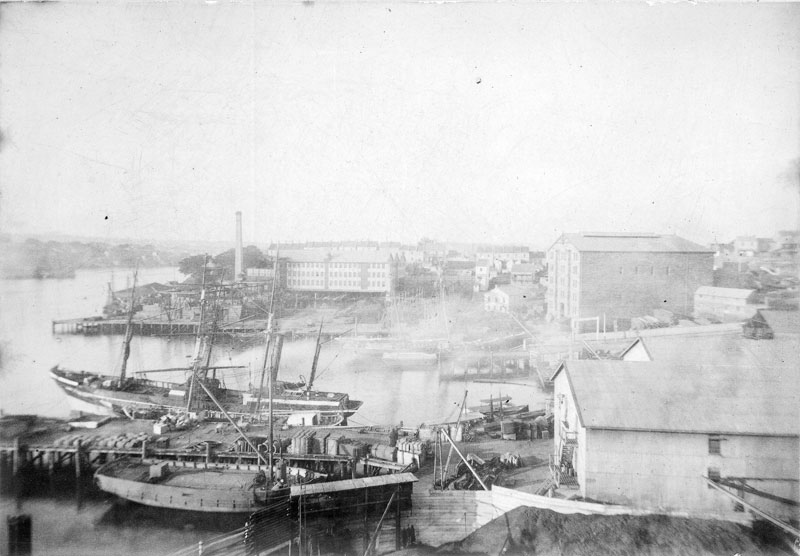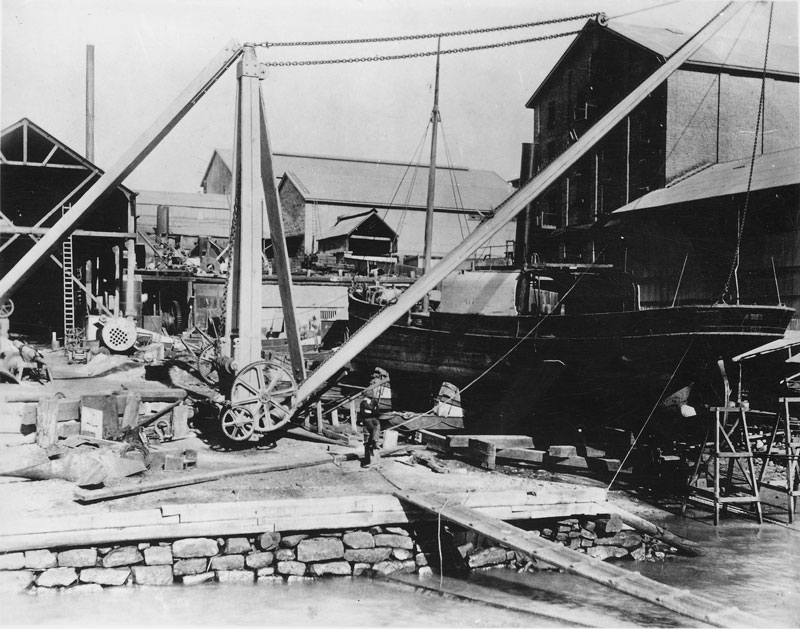Ships
It is impossible to overstate the symbolic as well as the real significance of shipping in Australia, a country ‘girt by sea’. British colonists arrived in world-class ships, and for many years relied absolutely on sea-borne supplies. Many imagined that Australian history began with the First Fleet: they were not very impressed by the canoes in which Aboriginal people criss-crossed the harbour and caught fish. Shipping shaped the Pyrmont settlement as much as anywhere: economic development spread from Pyrmont Point, served by water, rather than Ultimo, relying on roads. That development included quarrying for ships’ ballast, and then ship-building. Thomas Chowne’s shipyard built the first Manly ferry: the Australian Steam Navigation Company reshaped Darling Island and built the yard that assembled Australia’s first iron ship.
Pyrmont’s leading industry, CSR, came here precisely because deep water moorings allowed ships to bring sugar from northern New South Wales, Queensland and Fiji to unload their cargoes directly to the refinery. To accommodate these vessels, an additional jetty was built, in effect an extension of Harris Street into Elizabeth Macarthur Bay. When CSR moved out, the Water Police remained as the sole maritime tenants, until 2010 when the City redeveloped the site as a park.
On the other side of the peninsula, Jones Bay Wharf linked rail, road and sea transport, embodying waterfront technology at its most developed. It includes a double row of two storeyed steel and timber sheds with central roadways to both levels. The Wharf linked to Darling Harbour and to the state’s railway network, to carry large volumes of wool and wheat for export.
The Wharf embarked troops for the Second World War and welcomed migrants afterwards. However, from the 1960s containers were better handled at Botany Bay and passengers better served at the new overseas passenger terminal at Circular Quay. In 1991 it was declared surplus to government requirements, and a few years later Jones Bay Wharf was redeveloped for offices.
For more information, visit the Pyrmont History website.








